The Occult Underpinnings of Mary Rogers’ Murder: An Exercise in Ratiocination
Edgar Poe as Cultural Warrior Part 9
The following is part 9 of an ongoing series on Edgar Poe as Cultural Warrior which will now begin to shed light on the occult takeover of America and broader pagan revival which Poe played a major part in resisting during his short life. Click here for previous instalments
Listen, listen, Mary mine,
To the whisper of the Apennine,
It bursts on the roof like the thunder's roar,
Or like the sea on a northern shore,
Heard in its raging ebb and flow
By the captives pent in the cave below.
The Apennine in the light of day
Is a mighty mountain dim and gray,
Which between the earth and sky doth lay;
But when night comes, a chaos dread
On the dim starlight then is spread,
And the Apennine walks abroad with the storm,
Shrouding...
-Percy Bysshe Shelley, Passage Of The Apennines
On top of their opposing affiliations representing American republican vs British Imperial intelligence operations, both Edgar Allan Poe and Sir Arthur Conan Doyle, are known to have put their minds to solving practical murder cases in their lifetimes.
In the case of Sir Arthur Conan Doyle, his 20 year crusade to clear the name of accused animal mutilator who carried out the Great Wyrley outrages of 1903, George Edalji, using the powers of ‘deduction’ popularized by his character Sherlock Holmes is one example of detective fiction shaping the real world.
In Poe’s short story The Murder of Marie Roget published in 1842, Inspector C. Auguste Dupin is challenged to solve the mystery of a murder of a beautiful young woman in Paris.
Poe’s fictional narrative was actually based upon events surrounding the very real 1841 murder of a New York woman named Mary Cecilia Rogers who had worked as a cigar girl in a popular New York Cigar lounge run by John Anderson, a leading figure within the Tammany Hall political machine that had installed President Andrew Jackson into the White House in 1832. Anderson’s Cigar Emporium also happened to be an intelligence hub frequented by leading members of the intelligentsia.
The Murder of the Beautiful Cigar Girl: Signs of a Ritual Killing
On July 25, 1841, Mary Rogers told her fiance Daniel Payne (who also lived with Mary in a boarding house managed by Mary and her mother) that she was to visit her aunt, and would return that evening.
Three days later, the heavily decayed body of Mary Cecilia Rogers was discovered floating in the Hudson River, next to a strange location dubbed ‘Sybil’s Cave’ located on the estate owned by an illustrious New Jersey Family. Beyond the obvious decay, her body was tied with rope, and beaten beyond recognition with signs of extreme sexual violation.
It didn’t take long for every press outlet of New York to run sensationalist stories about her murder turning her death into a national obsession, and the first case of a national media hysteria surrounding a violent murder mystery in US history.
However, when we scratch behind the surface appearance of this murder case, and Poe’s short story, a much darker picture soon emerges which showcases evidence of the occult takeover of the USA that was underway during Poe’s lifetime.
A Word on Method before Proceeding
Of course, the most challenging thing when dealing with such topics, as secret societies, and occult rituals of the type which we will here be exploring is simply that the very depth of secrecy involved means that we will have very little direct evidence to use in our analysis.
However, like Poe’s Inspector Dupin, we will use the method of ratiocination that involves both inductive as well as deductive analysis without being bounded by either method. We will use pattern recognition thinking (inductive) and a priori analysis involving an understanding of top down dynamics to triangulate our minds’ eyes onto the trail we seek. Hopefully, in the course of this exercise, you dear reader, may come to appreciate, to a greater degree than you had hitherto appreciated, the power of your own mind and the subtle texture of the forces shaping universal history expressed by the ritual murder of Mary Cecilia Rogers.
To be clear, Edgar Allan Poe didn’t want anyone to be confused about the real-life story behind his fictional tale, writing in the story’s introduction:
“The extraordinary details which I am now called upon to make public, will be found to form, as regards sequence of time, the primary branch of a series of scarcely intelligible coincidences, whose secondary or concluding branch will be recognized by all readers in the late murder of MARY CECILIA ROGERS, at New York.”
Many Americans reading the popular press- especially Horace Greeley’s New York Tribune, were quick to blame Mary’s fiancee Daniel Payne as the guilty party in the heinous crime.
Despite having an alibi, Payne was demonized across the press and on October 8, 1841 (the same date of Poe’s death exactly eight years later), his dead body was also found lying on a bench next to Sibyl’s Cave in New Jersey. Next to his body was found a broken vial of laudanum (a fast-working poison) with a note in his pocket reading “To the world- Here I am on the spot: God forgive me for my misfortune in my misspent time.”
Was Payne’s death a suicide as popularly believed?
Was he party to the murder of his fiance and killed himself out of guilt?
However, like the narrative of Mary Rogers, even here the popular explanation for his death doesn’t add up as the coroner conducting Payne’s autopsy discovered no sign of laudanum in his body, and could not account for the actual cause of death.
For months, other press agencies blamed street gangs as the culprit, while other newspapers even promoted the narrative that Mary Rogers was still alive since the body was supposedly too far decomposed to be properly identified.
More than one year later, in October 1842, a woman named Frederica Loss, who was an owner of a tavern near the site of Mary’s murder was “accidentally” shot by one of her sons. Loss had been in the public eye since Mary’s body was first discovered, as Loss had apparently witnessed the young girl in her tavern with a mysterious man the night of her death, and it was one of Loss’s sons who “discovered” Mary’s clothes in some bushes weeks after the killing.
Among Loss’s final words before dying she indicated that Mary Rogers had died during a failed abortion that took place at her tavern a year earlier.
Loss’s deathbed testimony became the final word on Mary’s death, and since that time, all experts have come to the consensus that Mary Rogers had died during an abortion. Case closed.
However, if this were so, then why was her face beaten beyond recognition? Why were there strangulation wounds around her neck? Why the extreme mutilation of her abdomen and womb? Why the strange death of her fiance just two months later at the same location?
Clearly something wasn’t adding up.
Edgar Poe had every reason to believe another darker picture was afoot, and while he admitted that there was more to the story than the facts which he revealed in The Murder of Marie Roget, the larger pattern of events surrounding Mary’s murder lead the mind to grapple with a much darker and disturbing picture surrounding the murder of the ‘Beautiful Cigar Girl’.
To address this darker picture, it will be necessary to evaluate the environment in which Mary worked in New York and the location in which she died.
Setting the Stage of Mary’s Life
Doug McGowan noted the strategic location of Mary’s cigar lounge writing:
“Literary notables as James Fenimore Cooper, Washington Irving, and Edgar Allen Poe frequented the cigar shop where Mary worked. More importantly, reporters and editors of New York City’s newspapers were also patrons of the store. After the discovery of her body, those same reporters put the cigar girl’s death on the front pages.”
As established by Allan Salisbury in 1981 and this author in The Poe You Never Knew, Cooper, Irving and Poe were in fact closely aligned agents of the Society of the Cincinnatus and were all operating simultaneously in Europe in 1830 alongside fellow Cincinnatus member Marquis Lafayette during the latter’s failed effort to establish a republican revolution across Europe. All three authors were also exposing oligarchical operations against America’s people and republican institutions throughout their many fictional writings. [1]
The young Mary Cecilia Rogers maintained a second job working in a boarding house with her widowed mother Phoebe in the heart of the Publishers’ Row… then the central point of the new mass media industry in America. Historian Amy Gilman Srebnick wrote of the strategic location of the Rogers’ boarding house:
“The Rogers’ boardinghouse was located on Publishers Row, just one block south of Printing House Square, at the epicenter of the city’s thriving publishing industry. Nassau Street and its environs… was the city’s ‘brain, ever pulsating with the beating of a printing engine.’ Within a few steps of the Rogers’s residence were the offices of most of the city’s major newspapers and publishing houses, as well as the headquarters of reform and evangelical publications.” [2]
Upon arriving in New York from their ancestral home in Connecticut in 1837, Phoebe and her young daughter first lived at the house of John Anderson. Anderson was an extremely powerful player within a vast political machine called ‘Tammany Hall’ which was created by arch traitor Aaron Burr, and which had only recently succeeded in installing a Scottish Rite president into power in the form of Andrew Jackson (in 1832).
Amy Srebnick writes: “Anderson had commercial and political ties that placed him within a distinctly new and powerful subculture of the city… taking form around Tammany Hall”.
She goes on to state: “Anderson moved in the New York circle of late Jacksonian Democrats committed to free trade, low tariffs, and state’s rights as well as firm opposition to the Whig tradition.”
Again, dear reader, it is important to hold in mind that Tammany Hall’s dominance of the republic during this period was made possible through the Scottish Rite-led frenzy ironically dubbed ‘The Anti-Masonic Movement’ stretching from 1826 to 1840. [3]
John Anderson was also the owner of the same Tobacco Emporium near City Hall that Mary would begin working at in 1838, and which was a hub of New York’s intelligentsia including Cooper, Irving and Poe.
How did Mary and Phoebe come to know John Anderson before moving to New York such that they were brought into his home and provided assistance to start a boarding house, and receive employment for Mary? What role did they have within the realm of espionage that pervaded New York during this period?
Why did Anderson suffer a life of haunting visions of Mary from the day she died until his own last days in Paris in the 1880s? His friend and former associate Senator Abner Mattoon noted that “he said she appeared to him in the spirit from time to time”… and that “he had many, very many, unhappy days and nights in regard to her.” [4]
Passing Mary’s boarding house, Anderson’s friend Felix McClosky testified that he would “dramatically denounce it as ‘the damned house’ which was the cause driving him out of politics and belittling him in New York and which had kept him from advancing.”… Anderson was also quoted by McCloskey as saying “I want people to believe that I had no hand in her taking off.” [5]
Why was Anderson so paranoid and driven to near insanity over the murder of Mary? What was weighing on his conscience?
Not your regular American Family
It is worth taking note of another anomaly before proceeding towards the deeper implications of Sibyl’s Cave… that is, the incredible family connections of Mary Rogers.
Srebnick writes of Mary’s prestigious American lineage:
“Mary Rogers was the descendant of two of New England’s ministerial elite and descendants of Richard Mather, one of Conneticut’s first settlers; and the Rogerses, descendants of James Rogers, also an early Connecticut settler and associate of Winthrop’s son and Connecticut founder, John Winthrop Jr.” [6]
Mary’s connection to the Mather family derived from her mother Phoebe’s first husband, Connecticut industrialist Ezra Mather.
Ezra was the great grandson of Cotton Mather (1663–1728) - the father of the New England republican cause, enemy of the Hellfire Club penetration of New England and patron of a young Benjamin Franklin.
As the historian Graham Lowry demonstrated in How the Nation Was Won, in 1720, an elderly John Winthrop Jr. and Cotton Mather stood in opposition to the spread of Hellfire Clubs across the English colonies, one branch being led by Benjamin Franklin’s older brother James Franklin.
Lowry also documents Cotton Mather’s deployment of a young Benjamin Franklin into London’s Hellfire Club during the 1720’s, whose work provided invaluable intelligence used by America’s republican intelligentsia in the decades prior to the American revolution.
Lowry writes: “In 1721, at the age of fifteen, Benjamin Franklin joined the battle against these forces, in the middle of one of the most intensive campaigns to destroy the Mathers that their opponents had ever mounted. On the enemy side, he found his eldest half-brother James, to whose printing business he had been unwillingly apprenticed in 1718, for the onerous term of nine years. James Franklin had returned the previous year from London, where he acquired his press and type for printing- and familiarity with the degenerate admirers of Bernard Mandeville. By 1722, the Mathers were to accuse James Franklin of promoting “an Hell-Fire Club”.
Neither Cotton Mather nor his father Increase Mather (President of Harvard from 1681–1701) were friendly to occultists, alchemists and necromancers penetrating Connecticut and Massachusetts and working closely with the Winthrops, oversaw the purge of witch covens and satanic cults active within the early New England colonies.
These facts will play a very important role in the story Mary Cecilia Rogers.
From their marriage in 1796 until Ezra’s untimely death in 1808 at the age of 38, Phoebe and Ezra Mathers lived in a luxurious estate in Lyme, Connecticut and ranked among the most elite families of New England. The couple had four children, although only one (Frederick- born in 1808) lived long enough to marry and have children.
In 1814, Phoebe married Daniel Rogers who is reputed to be the father of Mary Cecilia Rogers, although this story may also have a touch of myth.
Phoebe’s daughter from her first marriage to Ezra Mathers (also named Phoebe) would have been 21 years old when Mary was born, and some have speculated that Mary Rogers may have been adopted by the grandmother. Were that hypothesis true, then Mary would have been a direct descendant of the Mathers bloodline.
Three of Phoebe’s four children and her second husband Daniel Rogers all died between 1829 and 1834. Something caused Phoebe to decide that Connecticut was no longer a safe place to live, and soon moved to New York with Mary.
Daniel Rogers
Cecilia’s father (or adopted father) Daniel also had a peculiar geneology. Daniel’s great grandfather, John Rogers (1648–1721) was the founder of a religious sect known as ‘The Rogerenes’ which was a spinoff of the Quakers and the Seventh Day Baptists, and maintained its existence until the 20th century.
Daniel Rogers’ older brother Moses Rogers was an expert in steam navigation, and world explorer who worked closely with American inventor and painter Robert Fulton, the inventor of the first commercial steamboats “who brought this old family its final fame and recognition while simultaneously pushing into modern times”. [7]
As we will come to see, Robert Fulton (1765-1815) was himself deeply enmeshed in counter-intelligence and operated in England for several years working closely with Benjamin Franklin’s friend Benjamin West (an American-born painter who became the President of England’s Royal Academy of Fine Arts from 1780-1810).
Fulton was known as “The Prophet of Railways” and led the fight to bring railroads to America along with vast canal systems, sitting as a member of the Erie Canal Commission from 1811-1815.
Robert Fulton’s primary nemesis in America was one Colonel John Stevens III (1749-1838), whom some have speculated stole many of the designs for steam ships, and canal-building technologies developed by Fulton transforming it into a vast fortune, and gaining control of all steam shipping transiting between New York and New Jersey by 1820. It was during a legal battle over the control of ferryboats from New Jersey to New York in 1815 in Congress that Fulton died after testifying against Stevens on February 24, 1815.
This vast fortune allowed Stevens to purchase nearly all of Hoboken New Jersey, and it was upon his vast estate, and directly under a Gothic castle (dubbed ‘Stevens’ Castle’) that John Stevens’ heirs constructed a strange tourist attraction dubbed Sibyl’s Cave covered by a gothic gateway. Surrounding Sibyl’s Cave, the Stevens family constructed a 12 hectare public garden dubbed ‘The Elysian Fields’.
Why did they do this? What relevance does Sibyl’s Cave and the Elysian Fields have in world history? To what exactly did the Stevens’ clan have in mind when constructing and naming these strange locations?
Sibyl’s Cave
While many people fixate on the multitude of elaborate details in this murder mystery, the most interesting, and often overlooked anomaly is the site which Mary’s body was discovered.
For it was on July 28, 1941 that two men found the body floating just a few feet away from the mouth of a peculiar place called ‘Sibyl’s Cave’ in Hoboken New Jersey. Hoboken’s Sibyl’s Cave is found at the foot of Stevens’ Castle built in 1792 overlooking the Hudson River (also called ‘Castle Point).
Sibyl’s cave itself is 10 ft above sea level, 30 ft in length and 100 ft west of the Hudson River, and features a natural subterranean river within it where mineral water was sold to tourists during the 19th century. The Cave entrance is fitted with Gothic gates and is adjacent to a vast privately-owned park dubbed ‘The Elysian Fields’.
The property of the cave and Elysian fields were owned by an extremely wealthy Stevens family which made their fortunes innovating steam shipping and America’s earliest locomotive sector. If the patriarchs of this family of inventors did not steal those technologies to which they are credited, then they should be congratulated for their good works.
However, the strange decision by several members of the clan, including Colonel John Stevens III to construct Sibyl’s Cave in 1832, built during an occult purge of US masonic lodges (as outlined in part 7 of this series), and occult takeover of the USA launched in 1826 raises many questions as to the true motive of the Stevens’ clan.
In the next segment of our series on ‘Edgar Poe as Cultural Warrior’ we will explore the deeper meaning behind this strange cave, and the occult takeover of America…
Footnotes
[1] Pat Ruckert writes of Cooper’s works: “The Bravo [written in 1830] presents us with a map of the thinking processes of the oligarchical mind. The sense of individual identity of the oligarch is entirely located in the social structure of the oligarchy itself. Universal principles, or law, neither define the individual's self-conception, nor even any internally defined purpose. He is totally "other-directed"-a mere tool or appendage for maintaining the continuity of the oligarchical system. Thus, for the oligarch, since there is no universal or higher purpose to his individual life-no obligation to principles, law, or justice-nothing, no matter how bestial or obscene, is forbidden. Of course, one should not embarrass the family with one's lawless behavior. Thus, the masks worn by the Venetians disguise the perpetrator of evil, while the act is permitted and condoned. Cooper followed with two more novels depicting the evil nature of oligarchical systems and institutions, The Heidenmauer (1832) and The Headsman of Berne (1833). The Heidenmauer is set in the early 16th Century and depicts the early phases of what became the 1511-1648 religious wars of Europe; it is a virtual textbook on counterintelligence warfare. The Headsman of Berne is an examination of the political and social relations in feudal Switzerland.
[2] The Mysterious Death of Mary Rogers by Amy Gilman Srebnick, p.62
[3] How Andrew Jackson Destroyed the United States, by Michael Kirsch, Executive Intelligence Review, 2012
[4] Cited in Amy Gilman Srebnick’s The Mysterious Death of Mary Rogers, Oxford University Press, USA, p.55
[5] ibid. p.55
[6] ibid. p. 34
[7] ibid. p.42




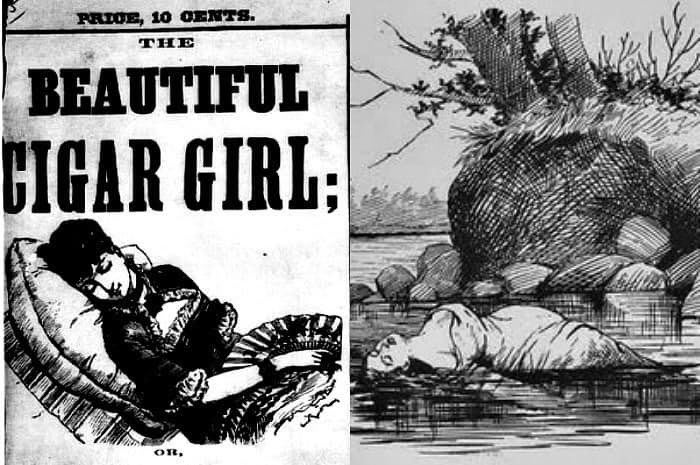
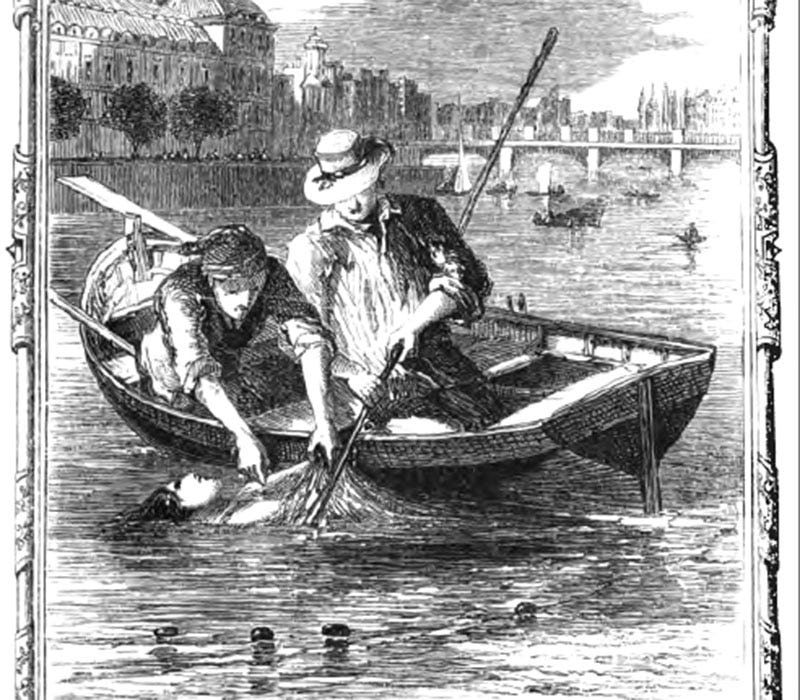
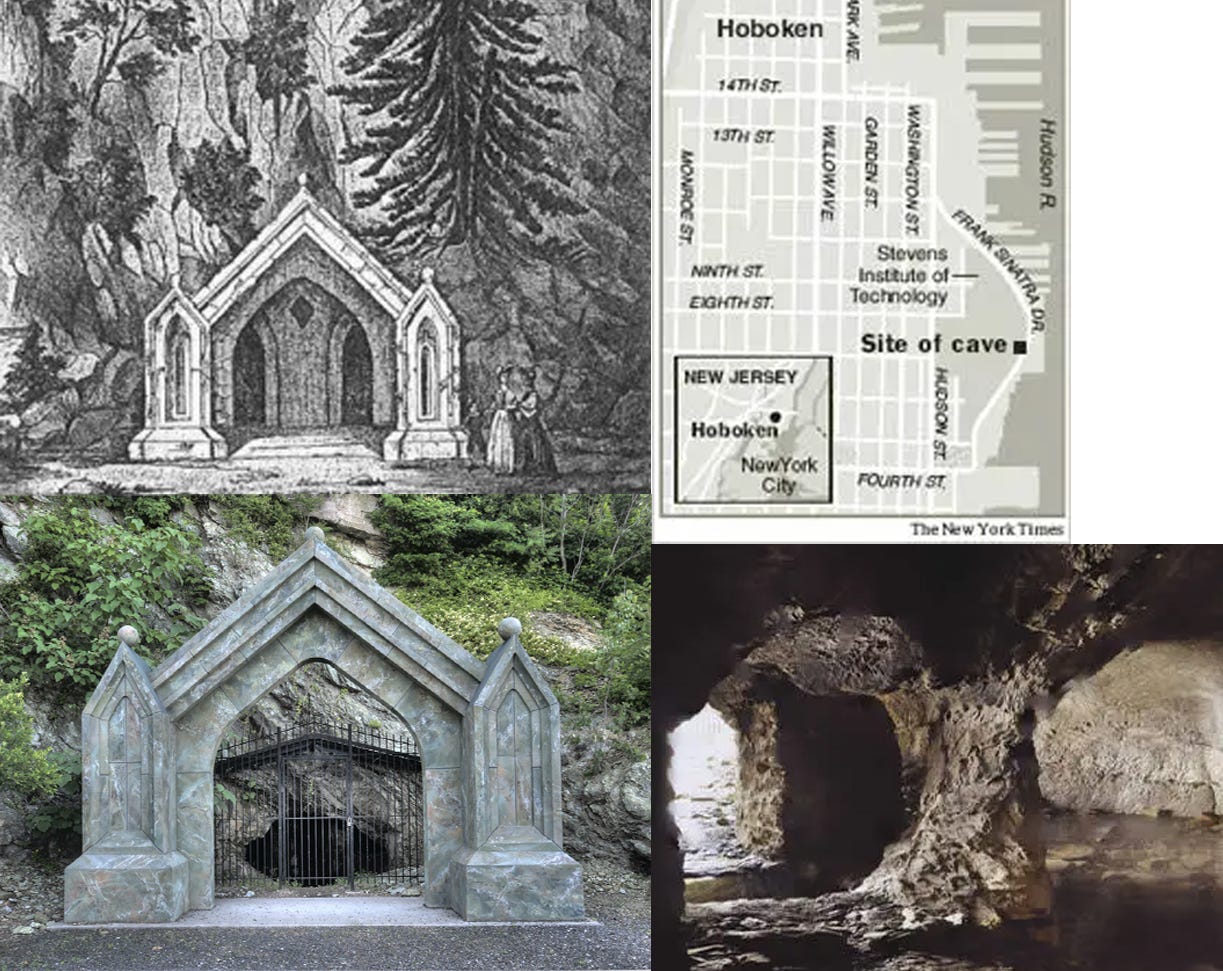
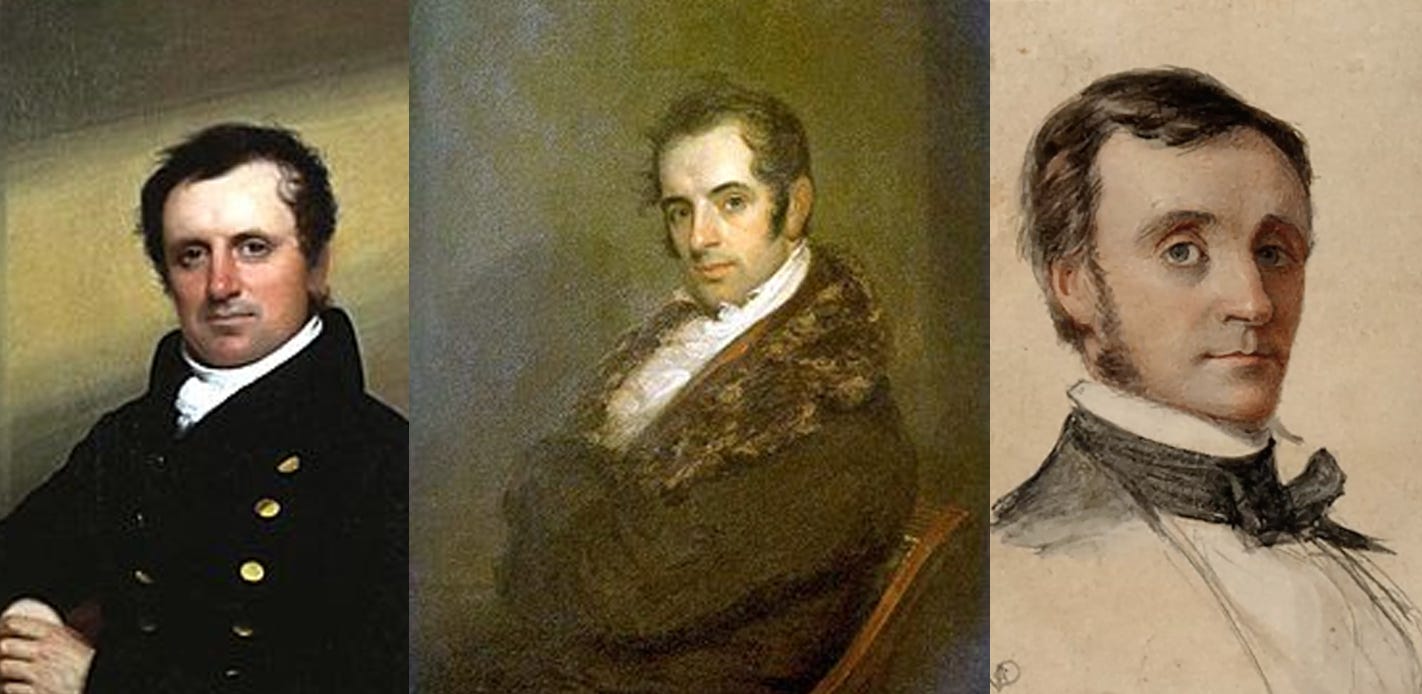
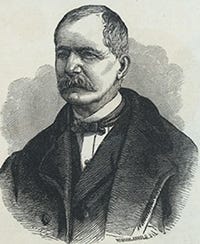

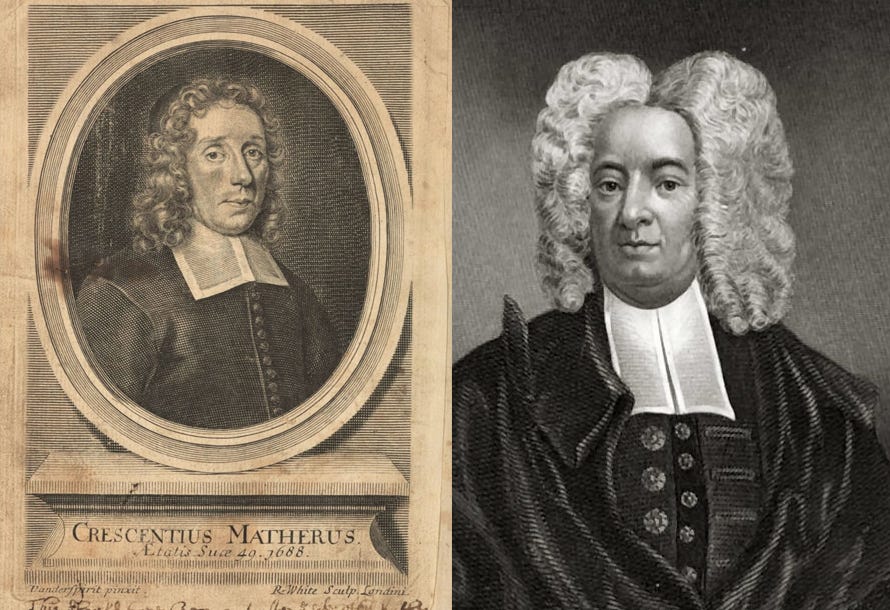
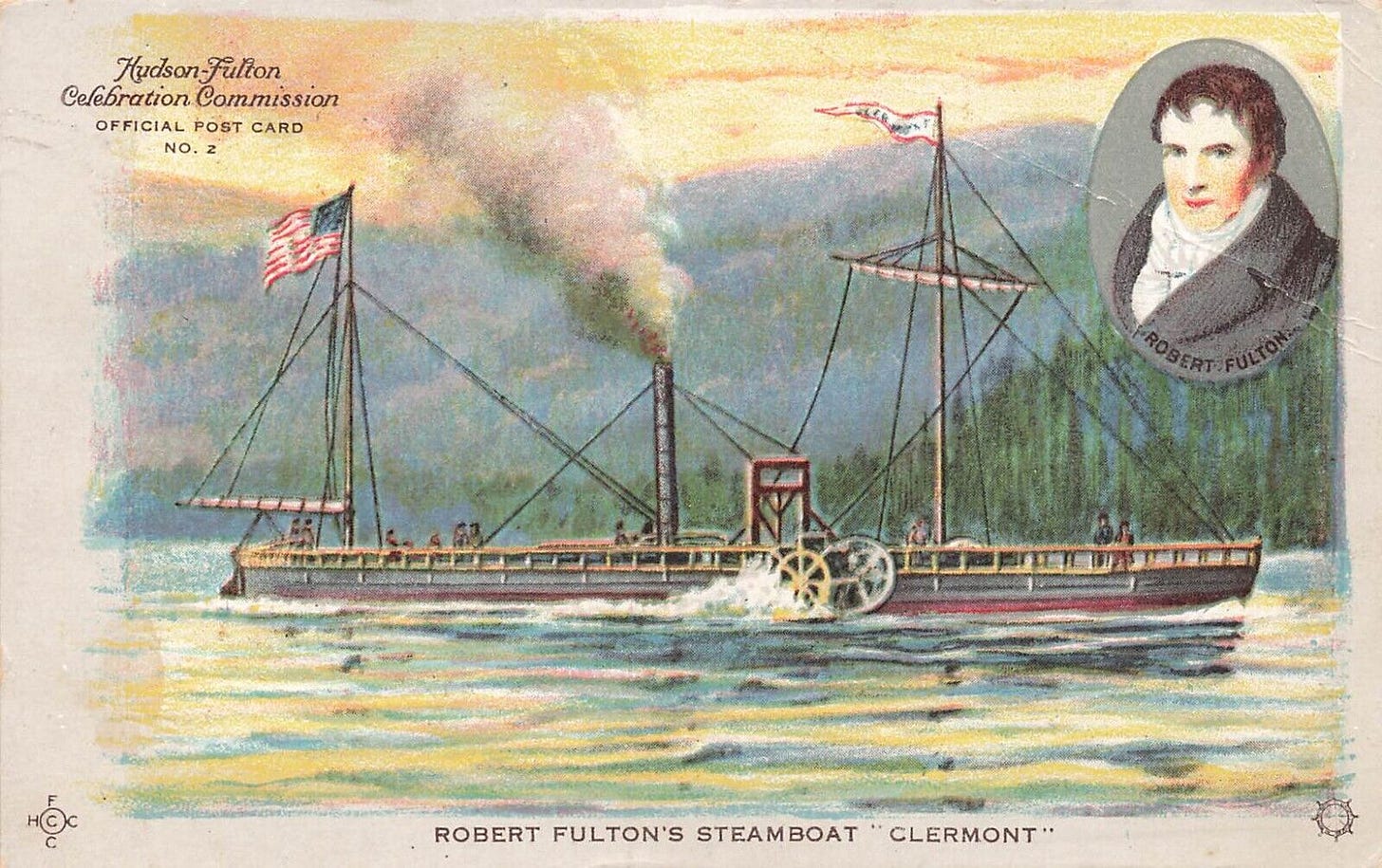
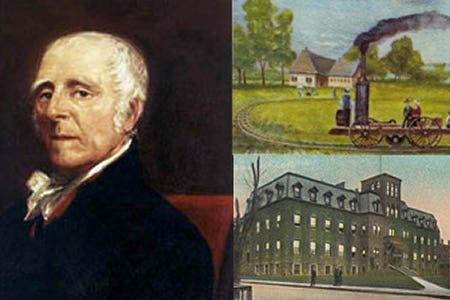
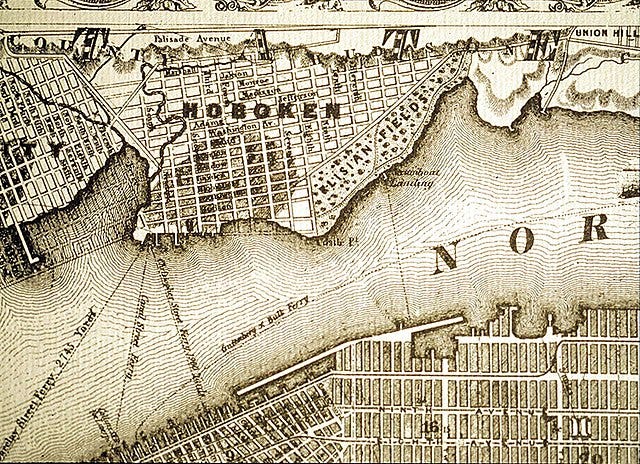
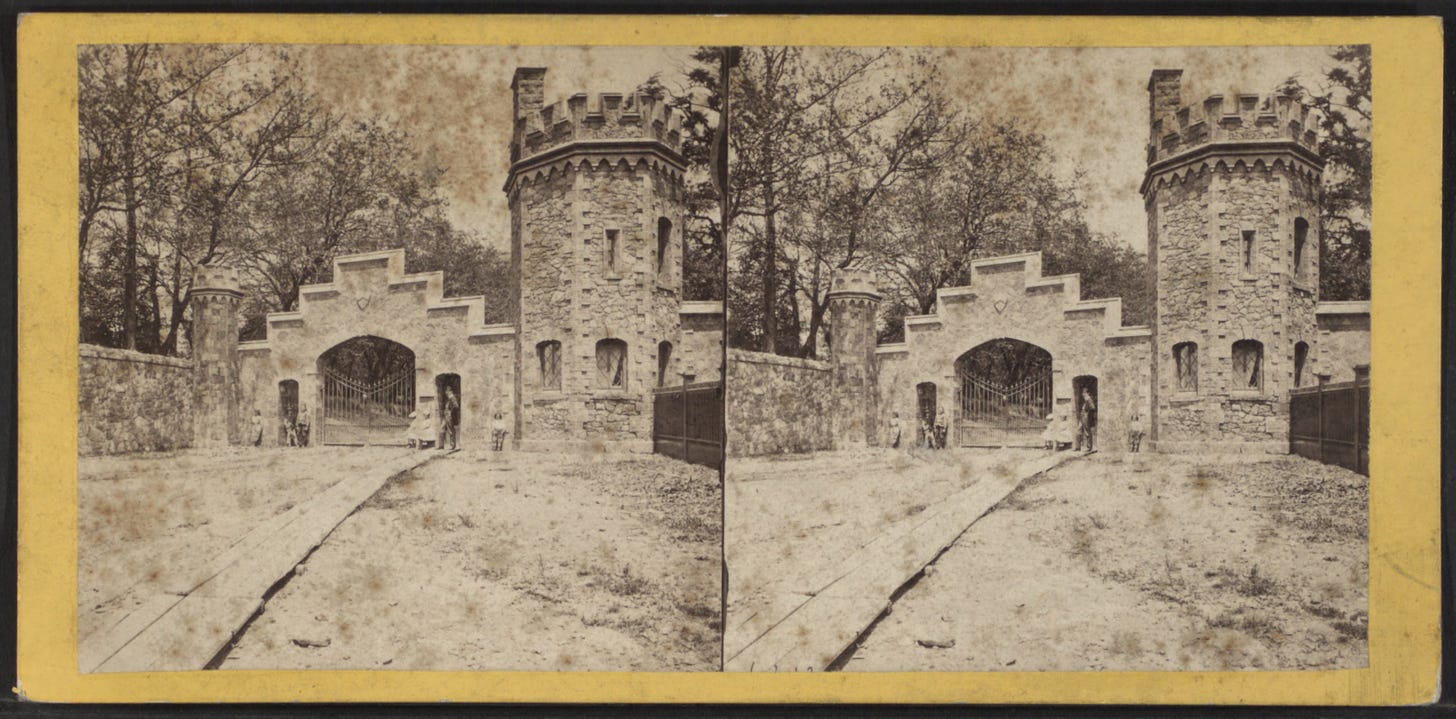
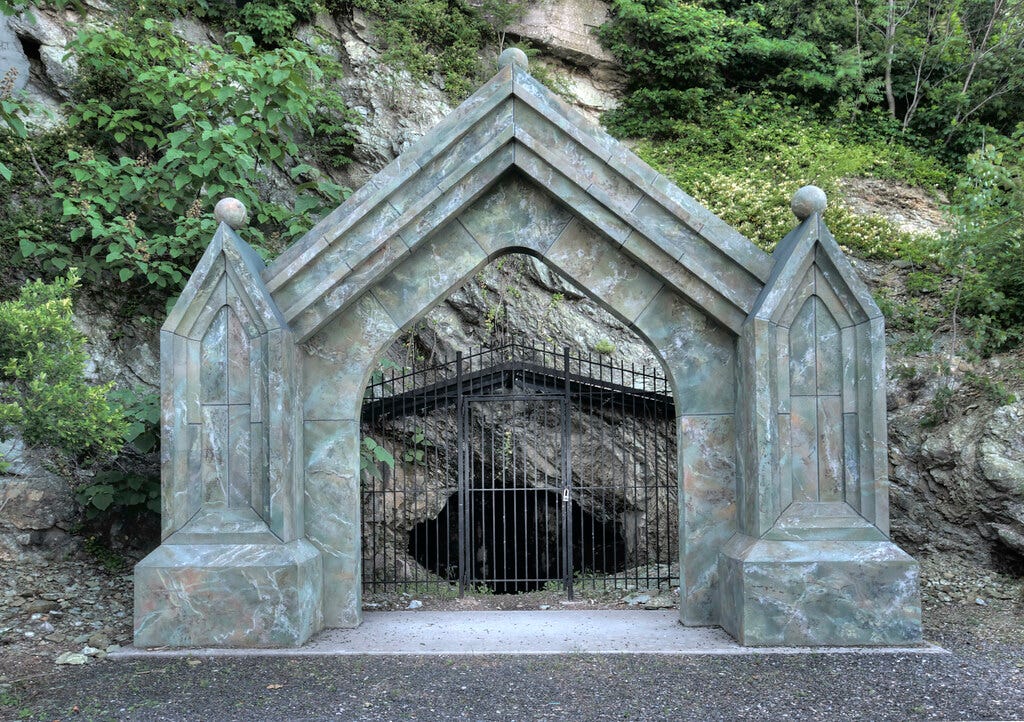




Ohhh, just started to get really interesting when it ended....! :))
Thank you Matt! Very interesting indeed.
Looking fwd to the eventual motives behind these machinations, as well as what one could learn from it. It seems that somehow the bloodlines do matter for the oligarchy. This in itself is an occult phenomenon.
`been catching up on this series and it's amazing how the plot thickens and the branches stretch, glad to have a taste of your shares and thankful for your fountain of knowl-edge...